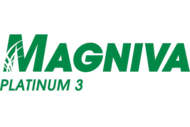The process of silage fermentation is a battle between “good” and “bad” microorganisms. “Good” microorganisms include lactic acid bacteria (LAB), both found naturally in the crop and added in the form of forage inoculants. On the other hand, there are common microorganisms that can negatively affect silage quality, including:
- Acetobacter bacteria
- Bacilli
- Butyric bacteria
- Clostridia bacteria
- Enterobacteria
- Listeria bacteria
- Molds
- Yeasts
Acetobacter
Acetobacter are acid-tolerant bacteria. Acetobacter can cause spoilage and are a particular concern with whole-crop corn silage and cereal silages.
Acetobacter require air to survive. Silage management practices that reduce air limit its opportunity for growth.
Bacilli
Bacilli ferment a wide range of carbohydrates into organic acids and ethanol. Bacillus growth can slow the rapid decline in silage pH needed to produce high-quality silage. In addition, bacillus growth can cause spoilage at feedout.
To reduce bacillus growth, limit silage heating and reduce air ingress through proper:
- Packing
- Covering
- Sealing
- Feedout techniques
Butyric bacteria
Butyric bacteria are present in the soil, and can contaminate silage when soil is picked up with the forage at harvesting. Butyric bacteria can contaminate milk in dairy operations. During cheese production, butyric bacteria can cause gas production that may cause cheese wheels to explode.
In the first days of the ensiling process, some butyric bacteria species can grow as fast as the LAB responsible for forage acidification. Once the silage reaches a low pH, the butyric bacteria will become dormant until they find favorable growth conditions.
Butyric bacteria growth is encouraged by a high temperature in forage, a low dry matter (DM), a low level of water-soluble carbohydrates and a high buffering capacity. If the silage is not stabilized, the butyric activity causes a secondary fermentation, which may lead to an increase in pH and heating of the silage.
Clostridia
Clostridia impair silage quality in several ways. Clostridial fermentations are a common pitfall of silage production. For more information, go to clostridial fermentation.
Enterobacteria
Enterobacteria competes with LAB for sugars. Enterobacteria can also degrade protein. This reduces the quality of silage and can produce toxic compounds. Enterobacteria can slow the rapid decline in pH needed for high-quality silage.
Enterobacteria will not proliferate at low pH. To reduce enterobacteria growth, ensure a rapid and efficient pH drop in the forage.
Listeria
Listeria moncytogenes lives almost anywhere in soil, pasture, manure piles or silage. Listeria grows in the presence of oxygen at a pH above 5.5. Listeria does not survive when the pH is below 5.5 — making it less of a concern in properly ensiled and managed forages.
When ingested, listeria can cause the disease listeriosis. It is a common disease of ruminants, pigs, dogs, cats, some wild animals and humans. Listeriosis causes neurological problems and can result in death, abortion, loss of feed intake and diarrhea.
Creating a low-pH silage environment is critical to controlling listeria.
Molds
Molds develop in silage where oxygen is present. This is common on surface layers of silage, but the entire silage structure is at risk for mold development — and therefore spoilage — if oxygen is present. Mold growth risks spoilage, reduces feed value and is a potential health risk if mycotoxins are present.
Specific molds can often be identified by the unique color of the growth.
To reduce the opportunity for mold growth, limit oxygen through proper:
- Packing
- Covering
- Sealing
- Feedout techniques
Yeasts
Yeasts are naturally present in all forage crops. Corn silage, cereal silages and HMC can have high indigenous yeast populations because yeasts grow best on feeds that contain starch and soluble sugars.
The rapid growth of yeasts over a short period of time causes aerobic instability and can lead to silage heating. Yeasts can multiply during the first few days after harvest, before all of the oxygen in the ensiled feed is consumed. In addition, the crop may ferment well and reach a low pH, only to heat rapidly and spoil at feedout when dormant yeasts are again exposed to air (oxygen).
To limit yeast growth:
- Harvest crops at the appropriate maturity level
- Use silage management practices that limit, and exclude, oxygen ingress in the storage structure
- Use forage inoculants that help inhibit yeast growth








